
Ferals, weeds and other pests in Queensland election spotlight
The Queensland invasive species scorecard released today shows that the Greens, then Labor have the strongest commitment to protecting the sunshine state from ferals, weeds and pests.

The Queensland invasive species scorecard released today shows that the Greens, then Labor have the strongest commitment to protecting the sunshine state from ferals, weeds and pests.
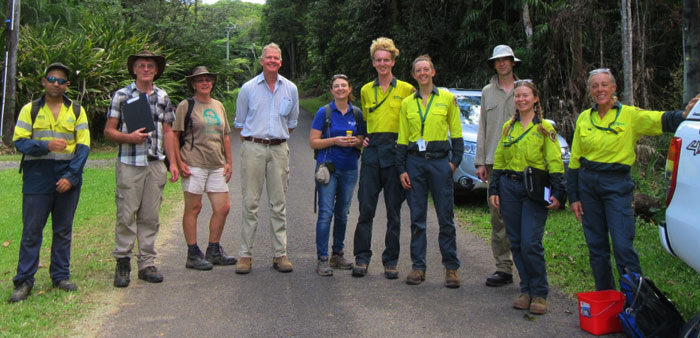
A locally-led campaign to eradicate yellow crazy ants has resulted in native wildlife finally returning to wet tropics rainforest just north of Cairns.
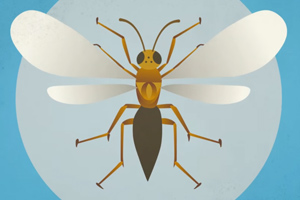
After more than seven years of research, community consultation and biosecurity checks, a micro-wasp from Malaysia has been imported to Christmas Island to control yellow crazy ants in the national park.
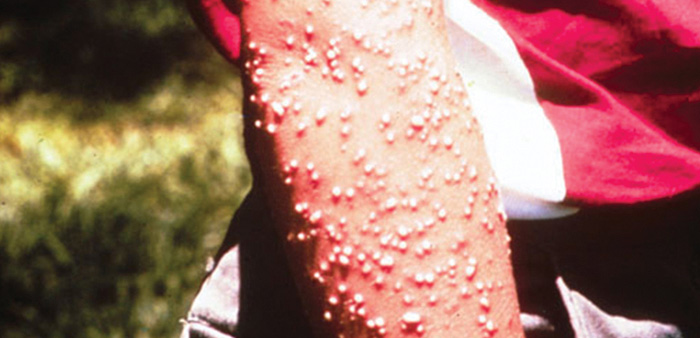
Attacks from fire ants in the US have led to human deaths, but in Australia we still have a chance to eradicate these menacing ants before they get out of control. But the clock is ticking.

Attacks from fire ants in the US have led to human deaths, but in Australia we still have a chance to eradicate these menacing ants before they get out of control. But the clock is ticking.

A program to rid Australia of yellow crazy ants has been bought back to life with the injection of $10.5 million over the next three years, but is it enough to secure Queensland’s Wet Tropics World Heritage Area from this dangerous invasive species?

A program to rid Australia of yellow crazy ants has been bought back to life with the injection of $10.5 million over the next three years, but is it enough to secure Queensland’s Wet Tropics World Heritage Area from this dangerous invasive species?
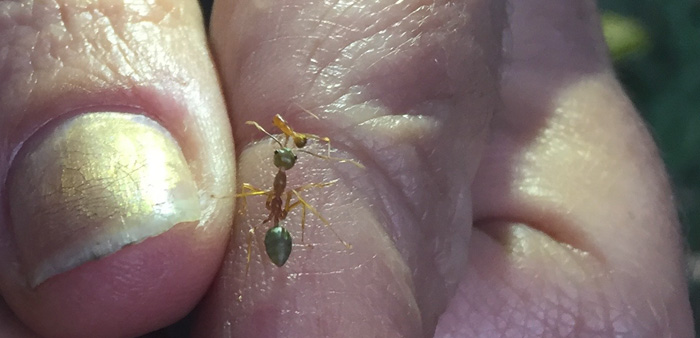
While in Cairns recently we saw evidence that local efforts are winning the war on yellow crazy ants, but community efforts still need all the help they can get if they are to turn the tide on this highly invasive ant.

Announcements by federal political parties to fund the eradication of yellow crazy ants from Queensland’s Wet Tropics rainforests is welcome news, but there’s a worrying shortfall.
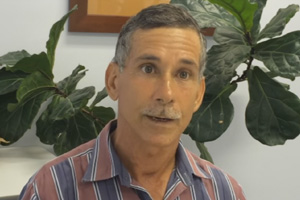
A failure to fully fund the eradication of yellow crazy ants from Queensland’s Wet Tropics World Heritage Area would unleash unimaginable horror on the region’s residents and wildlife.

Frank Teodo had the misfortune of being one of the first people in the Queensland wet tropics to experience a yellow crazy ants super colony.

Deputy PM Barnaby Joyce was only one of a very impressive list of winners recognised for making a major contribution to protecting Australia from dangerous new invasive species.

Australia has a small window of opportunity to keep the Wet Tropics World Heritage Area safe from yellow crazy ants. Researchers Lori Lach and Conrad Hoskin consider the potential costs of failure if the federal government refuses to provide more funding for eradication.

The Invasive Species Council has praised Federal Environment Minister, Greg Hunt, for providing $2 million for a 5-year eradication program of yellow crazy ants after
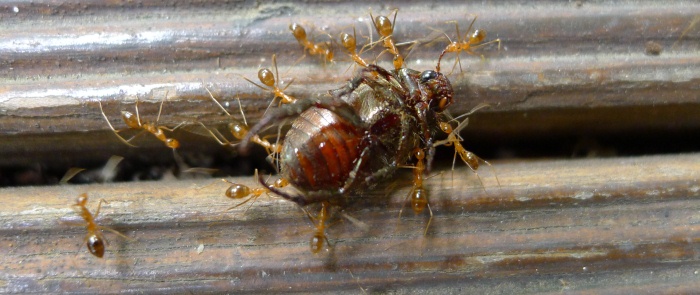
We tend to excuse the long-past decisions that left us with nightmare invaders like rabbits, foxes, lantana and cane toads – people didn’t know any

The Queensland invasive species scorecard released today shows that the Greens, then Labor have the strongest commitment to protecting the sunshine state from ferals, weeds and pests.

A locally-led campaign to eradicate yellow crazy ants has resulted in native wildlife finally returning to wet tropics rainforest just north of Cairns.

After more than seven years of research, community consultation and biosecurity checks, a micro-wasp from Malaysia has been imported to Christmas Island to control yellow crazy ants in the national park.

Attacks from fire ants in the US have led to human deaths, but in Australia we still have a chance to eradicate these menacing ants before they get out of control. But the clock is ticking.

Attacks from fire ants in the US have led to human deaths, but in Australia we still have a chance to eradicate these menacing ants before they get out of control. But the clock is ticking.

A program to rid Australia of yellow crazy ants has been bought back to life with the injection of $10.5 million over the next three years, but is it enough to secure Queensland’s Wet Tropics World Heritage Area from this dangerous invasive species?

A program to rid Australia of yellow crazy ants has been bought back to life with the injection of $10.5 million over the next three years, but is it enough to secure Queensland’s Wet Tropics World Heritage Area from this dangerous invasive species?

While in Cairns recently we saw evidence that local efforts are winning the war on yellow crazy ants, but community efforts still need all the help they can get if they are to turn the tide on this highly invasive ant.

Announcements by federal political parties to fund the eradication of yellow crazy ants from Queensland’s Wet Tropics rainforests is welcome news, but there’s a worrying shortfall.

A failure to fully fund the eradication of yellow crazy ants from Queensland’s Wet Tropics World Heritage Area would unleash unimaginable horror on the region’s residents and wildlife.

Frank Teodo had the misfortune of being one of the first people in the Queensland wet tropics to experience a yellow crazy ants super colony.

Deputy PM Barnaby Joyce was only one of a very impressive list of winners recognised for making a major contribution to protecting Australia from dangerous new invasive species.

Australia has a small window of opportunity to keep the Wet Tropics World Heritage Area safe from yellow crazy ants. Researchers Lori Lach and Conrad Hoskin consider the potential costs of failure if the federal government refuses to provide more funding for eradication.

The Invasive Species Council has praised Federal Environment Minister, Greg Hunt, for providing $2 million for a 5-year eradication program of yellow crazy ants after

We tend to excuse the long-past decisions that left us with nightmare invaders like rabbits, foxes, lantana and cane toads – people didn’t know any

The Queensland invasive species scorecard released today shows that the Greens, then Labor have the strongest commitment to protecting the sunshine state from ferals, weeds and pests.

A locally-led campaign to eradicate yellow crazy ants has resulted in native wildlife finally returning to wet tropics rainforest just north of Cairns.

After more than seven years of research, community consultation and biosecurity checks, a micro-wasp from Malaysia has been imported to Christmas Island to control yellow crazy ants in the national park.

Attacks from fire ants in the US have led to human deaths, but in Australia we still have a chance to eradicate these menacing ants before they get out of control. But the clock is ticking.

Attacks from fire ants in the US have led to human deaths, but in Australia we still have a chance to eradicate these menacing ants before they get out of control. But the clock is ticking.

A program to rid Australia of yellow crazy ants has been bought back to life with the injection of $10.5 million over the next three years, but is it enough to secure Queensland’s Wet Tropics World Heritage Area from this dangerous invasive species?

A program to rid Australia of yellow crazy ants has been bought back to life with the injection of $10.5 million over the next three years, but is it enough to secure Queensland’s Wet Tropics World Heritage Area from this dangerous invasive species?

While in Cairns recently we saw evidence that local efforts are winning the war on yellow crazy ants, but community efforts still need all the help they can get if they are to turn the tide on this highly invasive ant.

Announcements by federal political parties to fund the eradication of yellow crazy ants from Queensland’s Wet Tropics rainforests is welcome news, but there’s a worrying shortfall.

A failure to fully fund the eradication of yellow crazy ants from Queensland’s Wet Tropics World Heritage Area would unleash unimaginable horror on the region’s residents and wildlife.

Frank Teodo had the misfortune of being one of the first people in the Queensland wet tropics to experience a yellow crazy ants super colony.

Deputy PM Barnaby Joyce was only one of a very impressive list of winners recognised for making a major contribution to protecting Australia from dangerous new invasive species.

Australia has a small window of opportunity to keep the Wet Tropics World Heritage Area safe from yellow crazy ants. Researchers Lori Lach and Conrad Hoskin consider the potential costs of failure if the federal government refuses to provide more funding for eradication.

The Invasive Species Council has praised Federal Environment Minister, Greg Hunt, for providing $2 million for a 5-year eradication program of yellow crazy ants after

We tend to excuse the long-past decisions that left us with nightmare invaders like rabbits, foxes, lantana and cane toads – people didn’t know any
Get our blog the Feral Herald delivered to your inbox.
Our protected areas are being trashed, trampled, choked and polluted by an onslaught of invaders. Invasive species are already the overwhelming driver of our animal extinction rate, and are expected to cause 75 of the next 100 extinctions.
But you can help to turn this around and create a wildlife revival in Australia.
From numbats to night parrots, a tax-deductible donation today can help defend our wildlife against the threat of invasive weeds, predators, and diseases.
As the only national advocacy environment group dedicated to stopping this mega threat, your gift will make a big difference.
A silent crisis is unfolding across Australia. Every year, billions of native animals are hunted and killed by cats and foxes. Fire ants continue to spread and threaten human health. And the deadly strain of bird flu looms on the horizon. Your donation today will be used to put the invasive species threat in the media, make invasive species a government priority, ensure governments take rapid action to protect nature and our remarkable native wildlife from invasives-led extinction, death and destruction.
If you are having trouble submitting a form, please read this guide.
Please fill out the following form and one of our team will be in contact to assist as soon as possible. Please make sure to include any helpful information, such as the device you were using (computer, tablet or mobile phone) and if known, your browser (Mozilla Firefox, Chrome, Safari etc)
"*" indicates required fields
Dear Project Team,
[YOUR PERSONALISED MESSAGE WILL APPEAR HERE.]
I support the amendment to the Kosciuszko National Park Wild Horse Heritage Management Plan to allow our incredible National Parks staff to use aerial shooting as one method to rapidly reduce feral horse numbers. I want to see feral horse numbers urgently reduced in order to save the national park and our native wildlife that live there.
The current approach is not solving the problem. Feral horse numbers have rapidly increased in Kosciuszko National Park to around 18,000, a 30% jump in just the past 2 years. With the population so high, thousands of feral horses need to be removed annually to reduce numbers and stop our National Park becoming a horse paddock. Aerial shooting, undertaken humanely and safely by professionals using standard protocols, is the only way this can happen.
The government’s own management plan for feral horses states that ‘if undertaken in accordance with best practice, aerial shooting can have the lowest negative animal welfare impacts of all lethal control methods’.
This humane and effective practice is already used across Australia to manage hundreds of thousands of feral animals like horses, deer, pigs, and goats.
Trapping and rehoming of feral horses has been used in Kosciuszko National Park for well over a decade but has consistently failed to reduce the population, has delayed meaningful action and is expensive. There are too many feral horses in the Alps and not enough demand for rehoming for it to be relied upon for the reduction of the population.
Fertility control as a management tool is only effective for a small, geographically isolated, and accessible population of feral horses where the management outcome sought is to maintain the population at its current size. It is not a viable option to reduce the large and growing feral horse population in the vast and rugged terrain of Kosciuszko National Park.
Feral horses are trashing and trampling our sensitive alpine ecosystems and streams, causing the decline and extinction of native animals. The federal government’s Threatened Species Scientific Committee has stated that feral horses ‘may be the crucial factor that causes final extinction’ for 12 alpine species.
I recognise the sad reality that urgent and humane measures are necessary to urgently remove the horses or they will destroy the Snowies and the native wildlife that call the mountains home. I support a healthy national park where native species like the Corroboree Frog and Mountain Pygmy Possum can thrive.
Dear Project Team,
[YOUR PERSONALISED MESSAGE WILL APPEAR HERE.]
I support the amendment to the Kosciuszko National Park Wild Horse Heritage Management Plan to allow our incredible National Parks staff to use aerial shooting as one method to rapidly reduce feral horse numbers. I want to see feral horse numbers urgently reduced in order to save the national park and our native wildlife that live there.
The current approach is not solving the problem. Feral horse numbers have rapidly increased in Kosciuszko National Park to around 18,000, a 30% jump in just the past 2 years. With the population so high, thousands of feral horses need to be removed annually to reduce numbers and stop our National Park becoming a horse paddock. Aerial shooting, undertaken humanely and safely by professionals using standard protocols, is the only way this can happen.
The government’s own management plan for feral horses states that ‘if undertaken in accordance with best practice, aerial shooting can have the lowest negative animal welfare impacts of all lethal control methods’.
This humane and effective practice is already used across Australia to manage hundreds of thousands of feral animals like horses, deer, pigs, and goats.
Trapping and rehoming of feral horses has been used in Kosciuszko National Park for well over a decade but has consistently failed to reduce the population, has delayed meaningful action and is expensive. There are too many feral horses in the Alps and not enough demand for rehoming for it to be relied upon for the reduction of the population.
Fertility control as a management tool is only effective for a small, geographically isolated, and accessible population of feral horses where the management outcome sought is to maintain the population at its current size. It is not a viable option to reduce the large and growing feral horse population in the vast and rugged terrain of Kosciuszko National Park.
Feral horses are trashing and trampling our sensitive alpine ecosystems and streams, causing the decline and extinction of native animals. The federal government’s Threatened Species Scientific Committee has stated that feral horses ‘may be the crucial factor that causes final extinction’ for 12 alpine species.
I recognise the sad reality that urgent and humane measures are necessary to urgently remove the horses or they will destroy the Snowies and the native wildlife that call the mountains home. I support a healthy national park where native species like the Corroboree Frog and Mountain Pygmy Possum can thrive.